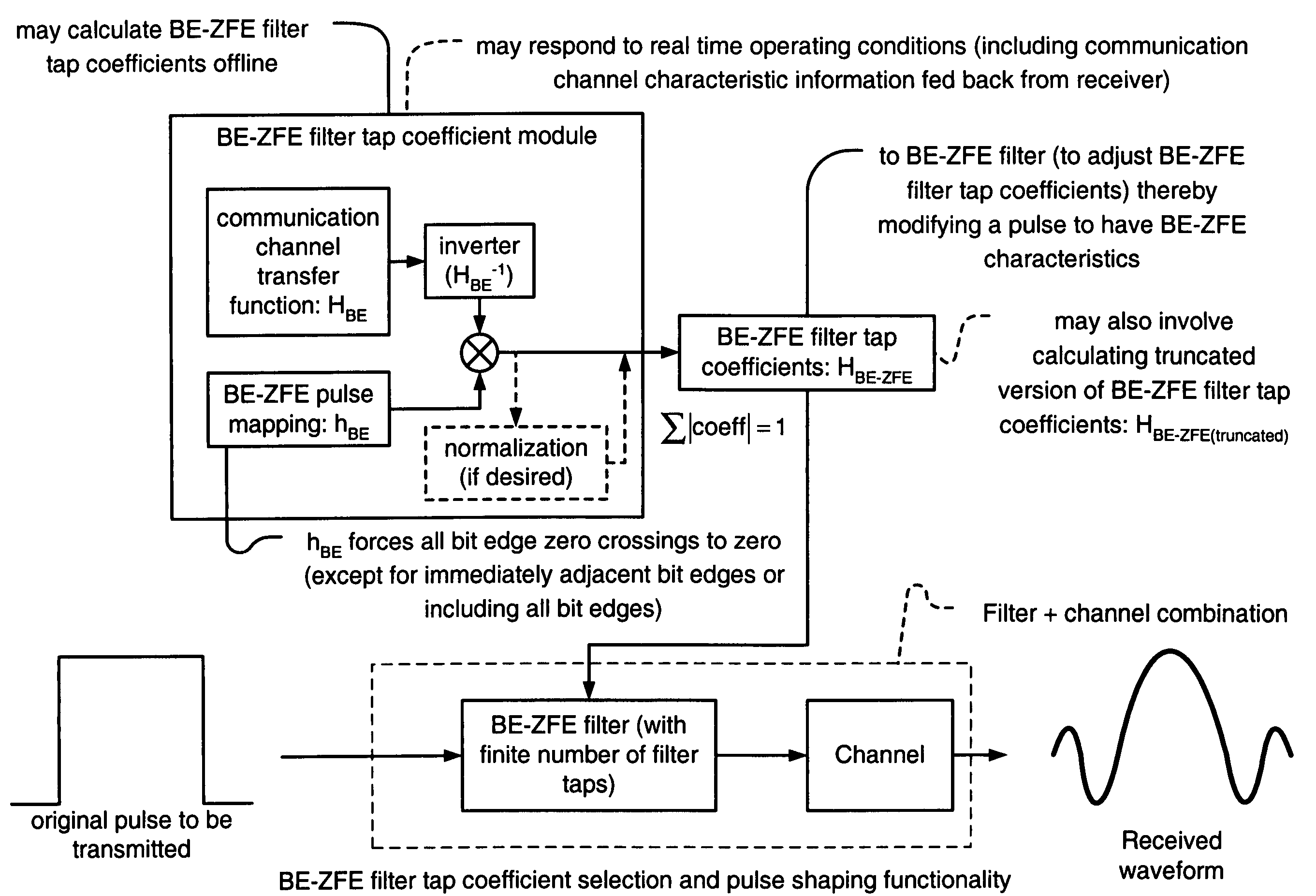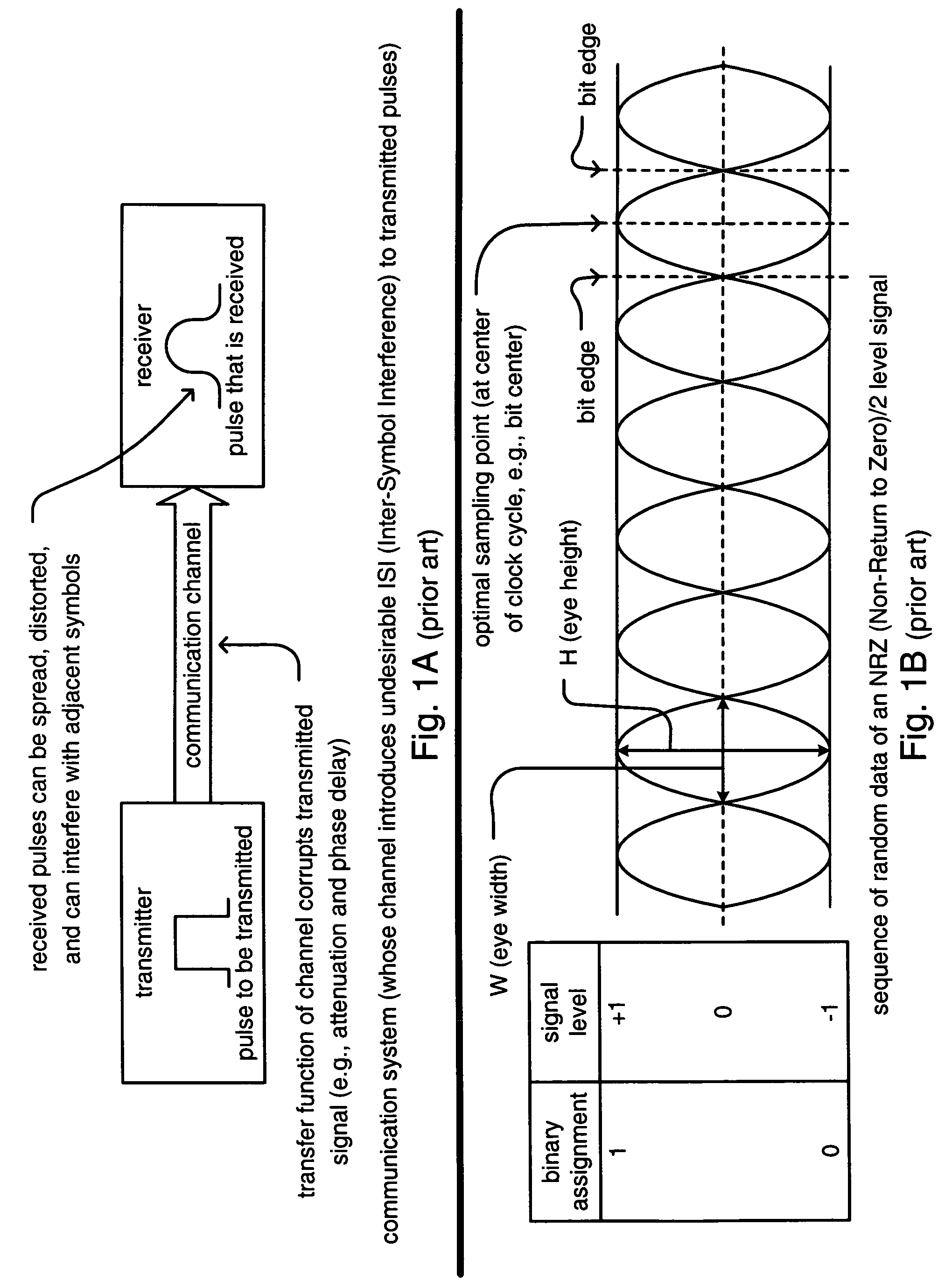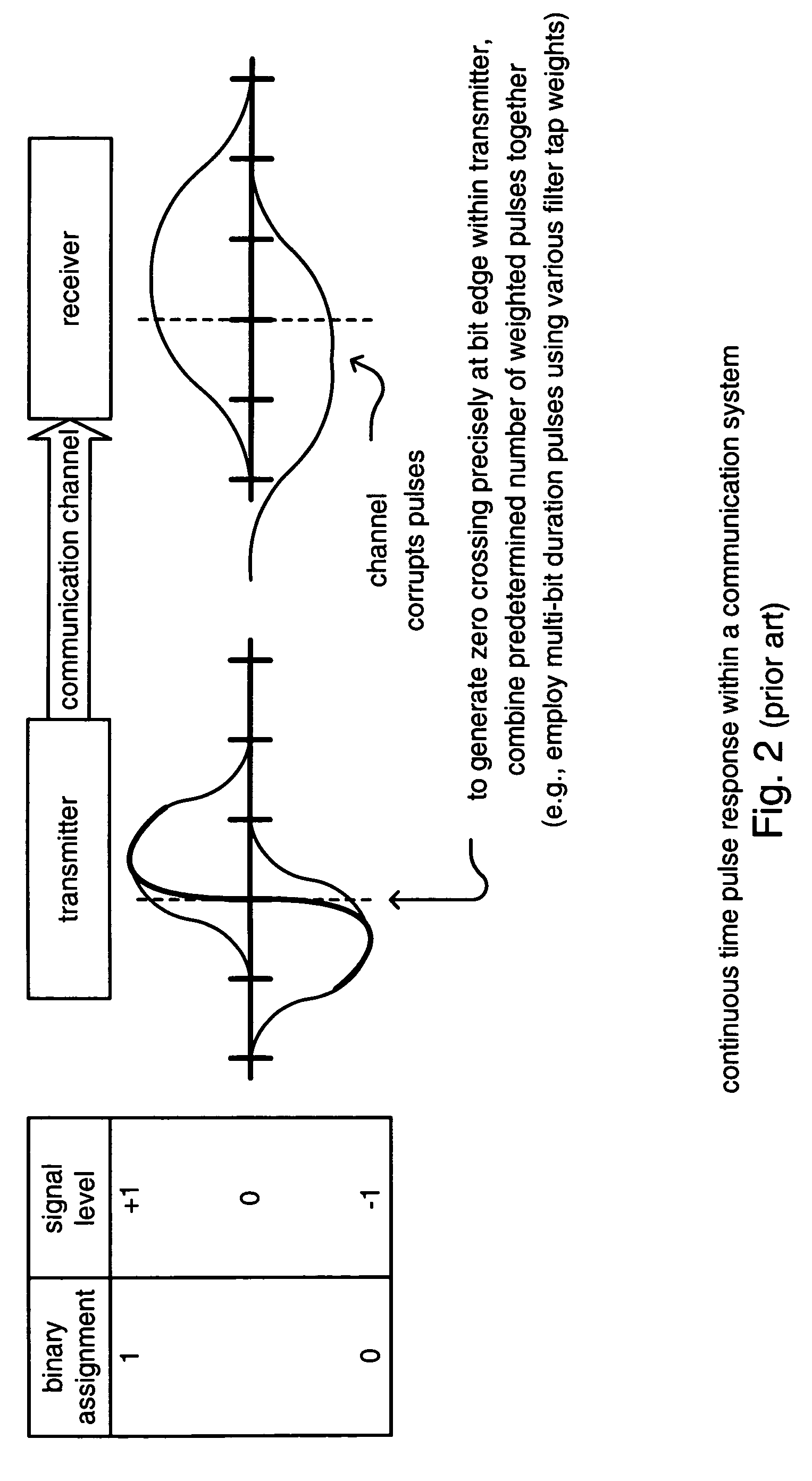Bit-edge zero forcing equalizer
a zero-forcing equalizer and bit-edge technology, applied in the field of equalization, can solve the problems of warped pulses that are transmitted from a transmitter to a receiver via the communication channel, undesirable interference, and spread of pulses,
- Summary
- Abstract
- Description
- Claims
- Application Information
AI Technical Summary
Benefits of technology
Problems solved by technology
Method used
Image
Examples
Embodiment Construction
[0052]A novel approach is presented whereby equalization is performed on a signal that contains data (e.g., information bits) to improve the probability of making an accurate decision on data contained within that data signal at a receiver end of a communication channel. This new approach of equalization may be performed using a BE-ZFE (Bit-Edge Zero Forcing Equalizer) as described herein. In a most general description, the BE-ZFE performs equalization by looking at the values of data that occur at the bit edges of a data signal and seeks to drive those associated error terms to zero. This new BE-ZFE approach is a significant departure from the classical prior art BC-ZFE (Bit-Center Zero Forcing Equalizer) approach that looks specifically at the values of the signal at the bit centers and seeks to drive those associated error terms to zero.
[0053]In contradistinction to the prior art BC-ZFE approach, the new BE-ZFE approach looks specifically at the values of the signal at the bit ed...
PUM
 Login to View More
Login to View More Abstract
Description
Claims
Application Information
 Login to View More
Login to View More - R&D
- Intellectual Property
- Life Sciences
- Materials
- Tech Scout
- Unparalleled Data Quality
- Higher Quality Content
- 60% Fewer Hallucinations
Browse by: Latest US Patents, China's latest patents, Technical Efficacy Thesaurus, Application Domain, Technology Topic, Popular Technical Reports.
© 2025 PatSnap. All rights reserved.Legal|Privacy policy|Modern Slavery Act Transparency Statement|Sitemap|About US| Contact US: help@patsnap.com



